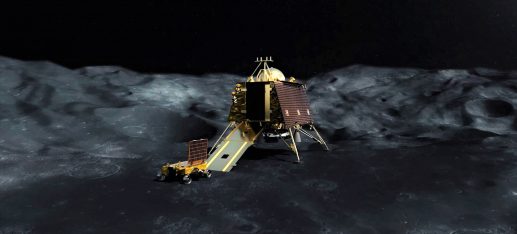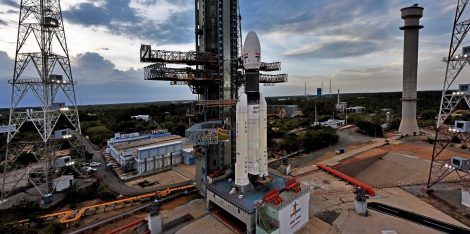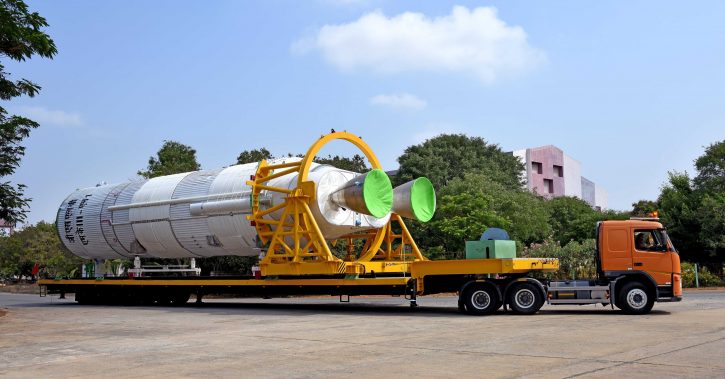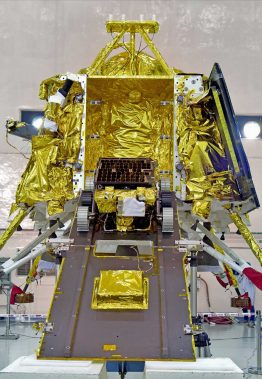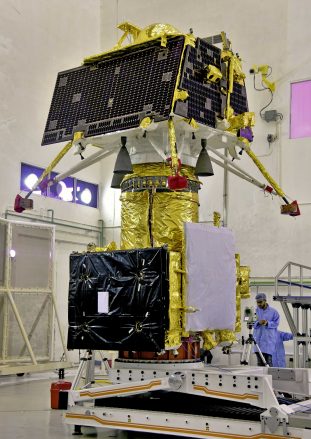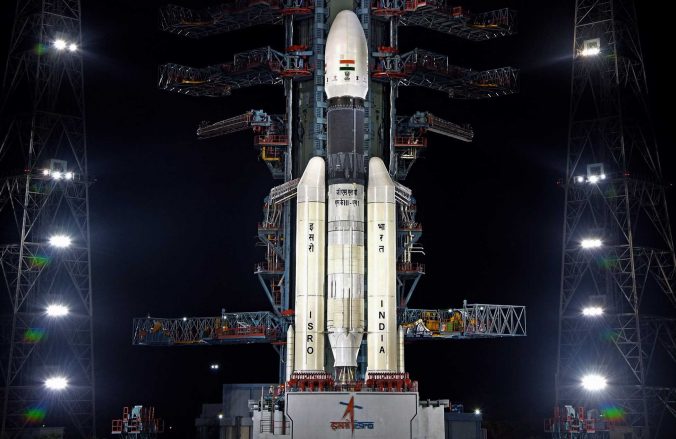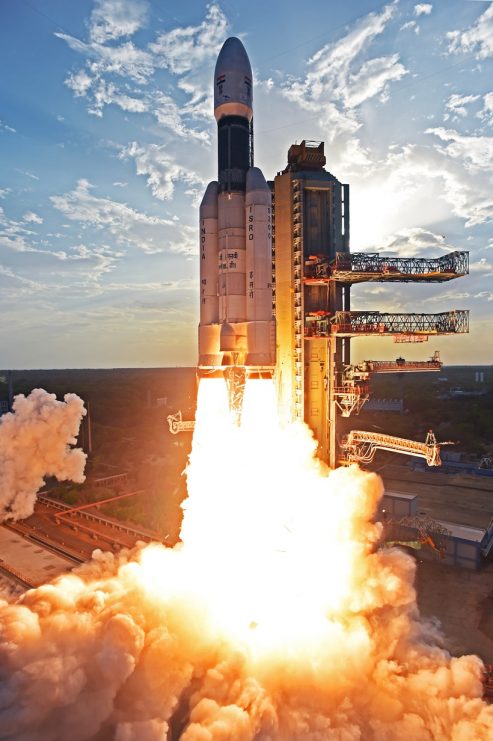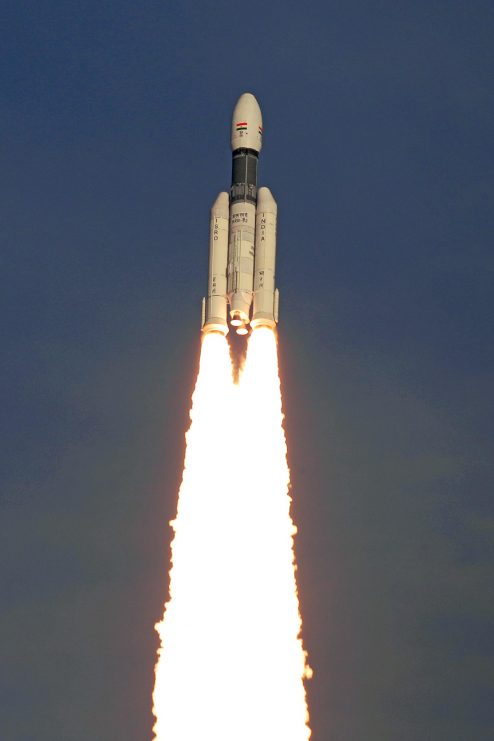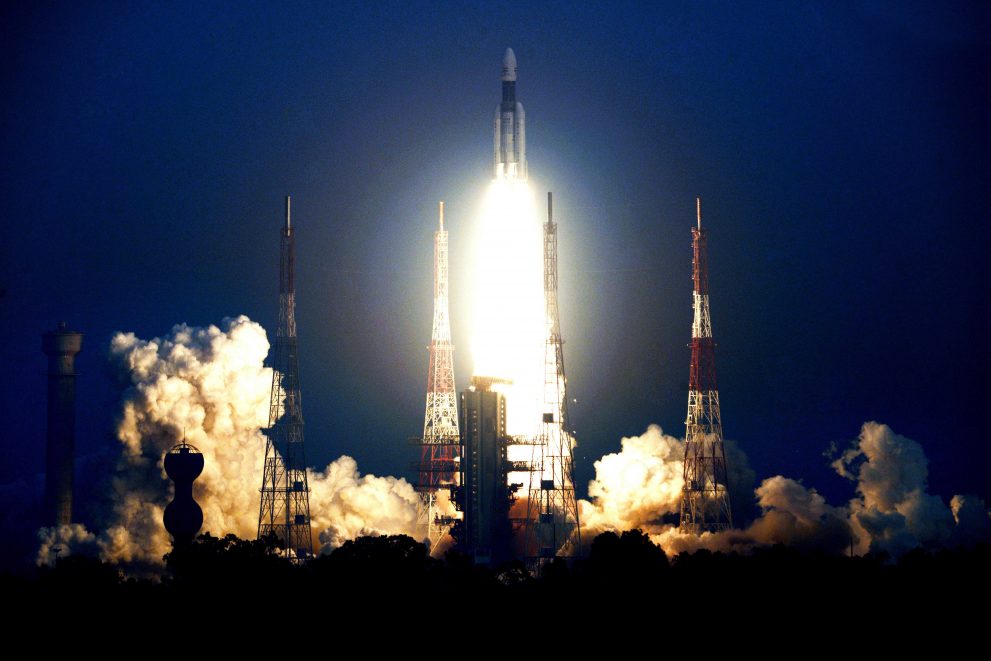The Indian Space Research Organization (ISRO) is perhaps just a few weeks (maybe days) away from attempting to place the country in the history books, hopefully setting India up to become the fourth nation on Earth – after the Soviet Union, United States, and China – to successfully soft-land on the Moon.
Known as Chandrayaan-2, the mission seeks to simultaneously launch a lunar orbiter, lander, and rover, altogether weighing nearly 3900 kg (8600 lb) at liftoff. If successful, the trio of spacecraft will remain integrated for about two months as the orbiter slowly raises its Earth orbit to eventually intercept and begin orbiting the Moon. Although originally expected to launch on Sunday, July 14th (July 15th local time), a bug with the Indian-built launch vehicle’s upper stage has pushed Chandrayaan-2 outside its original launch window, which ended today (July 16th). Depending on the complexity of the mission profile ISRO is using, the delay should be no more than a few days to a few weeks before the next launch window opens.
Editor’s note: Following ISRO’s July 15th scrub, the Chandrayaan-2 Moon lander mission has been rescheduled for launch no earlier than (NET) 2:43 pm local time, July 22nd (2:13 am PDT/9:13 UTC, July 23rd).
Fourth to the Moon (in one piece)
- All the way back in 1966, the Soviet Union (USSR) became the first to successfully soft-land an uncrewed spacecraft on the Moon with a mission known as Luna-9. Some four months after the momentous achievement, the United States became the second, safely landing Surveyor-1 on the Moon in June 1966.
- At the height of the space race, huge amounts of money was being funneled into these milestones, permitting the companies, institutions, and space agencies building, launching, and operating the individual missions to almost throw hardware at the metaphorical wall until something stuck. With the Soviet space program, this involved 17 failures, two successes, and one partial success in the first 7 years of the Luna initiative, culminating in Luna 9’s successful landing in February 1966.
- The US had three major separate programs known as Ranger, Lunar Orbiter, and Surveyor, the former of which was meant to simply fly past or impact the Moon to acquire detailed photos of its surface. Ranger suffered five consecutive failures and one partial failure before three full successes, while Orbiter was a complete success (5/5) and Surveyor failed only 2 of 7 attempts.
- Ultimately, this little snippet of history is simply meant to emphasize the utterly different approaches of those pathfinder programs relative to modern exploration efforts. In the case of ISRO’s Chandrayaan-2, failure would likely mean several years of delays before the next possible attempt – there is no concurrent (verging on mass-) production of multiple spacecraft like there was with Surveyor and Luna.
- Just shy of 50 years after the back-to-back first and second soft landings of Luna-9 and Surveyor-1, China became the third nation on Earth to successfully soft-land on the Moon with its 2013 Chang’e-3 mission, featuring a lander and rover. This was followed by Chang’e-4 in 2018, which continues to successfully operate 8 months after achieving the first successful soft-landing on the far side of the Moon.
- Finally, just several months ago, private company SpaceIL – supported by Israeli aerospace company IAI – attempted (albeit unsuccessfully) to make Israel the fourth country to land on the Moon.
Indian spacecraft, Indian rocket
- This finally brings us to Chandrayaan-2, what can only be described as a continuation of a recent resurgence in interest and serious robotic exploration of the Moon. Once it launches, the mission will take roughly 56 days to get into position for an attempted soft-landing. Prior to landing, the orbiter – in a circular, 100-km (62 mi) lunar orbit – will actively scout the intended landing site with a high-resolution ~0.3m/pixel camera to help the lander avoid any dangerous terrain.
- Once complete, the lander – carrying a tiny, ~27 kg (60 lb) rover – will begin its deorbit and landing maneuvers, hopefully culminating in a successful, gentle landing near the Moon’s South pole.
- Sadly, the Vikram lander and Pragyaan rover have an expected life of just one lunar day after landing, translating to ~14 Earth days or ~340 hours. This is a strong indicator that the Chandrayaan-2 landing component was not designed to survive the ultra-cold and harsh lunar night, also ~14 Earth days long.
- This isn’t much of a surprise, as surviving the lunar night is a whole different challenge that is rarely worth the hardware, effort, and funding required until the first prerequisite – a soft landing on the Moon – has been successfully demonstrated.
- A follow-up mission known as Chandrayaan-2 has already been proposed and would likely permit far lengthier exploration of the lunar south pole if India and launch partner Japan choose to move forward with it.
- Chandrayaan-2 will be launched on an Indian-built Geosynchronous Satellite Launch Vehicle (GSLV) Mk III-D2 rocket, the most powerful rocket in India’s arsenal. Although GSLV Mk III weighs significantly more than SpaceX’s
- Falcon 9 when fully fueled (640 metric tons to F9’s 550), the rocket is almost a third less capable to Low Earth Orbit (LEO) – 8000 kg to F9’s ~23,000 kg.
- However, thanks to the development of an efficient liquid hydrogen/oxygen (hydrolox) upper stage and engine, the rocket comes into its own when dealing with its namesake – geostationary (i.e. high-altitude) satellite launches. To GTO, GSLV Mk III is reportedly capable of launching at least 4000 kg, almost half of Falcon 9’s expendable performance and almost 75% as much as Falcon 9 with booster landing.
- Even more impressive is the cost: ISRO purchased a block of 10 GSLV Mk III rockets in 2018 for roughly $630M, translating to ~$63M per rocket, nearly equivalent to Falcon 9’s own list price of $62M. This places GSLV Mk III around the same level as Russia’s Proton-M rocket in terms of a cost-to-performance ratio, still second to Falcon 9 in most cases. GSLV Mk III has only launched three times (all successful) since its 2014 debut and Chandrayaan-2 will be its fourth launch.

<!–
–>
var disqus_shortname = «teslarati»;
var disqus_title = «India could become the fourth country ever to soft-land a spacecraft on the Moon next week»;
var disqus_url = «https://www.teslarati.com/deepspace-india-fourth-country-soft-moon-landing/»;
var disqus_identifier = «teslarati-109434»;

